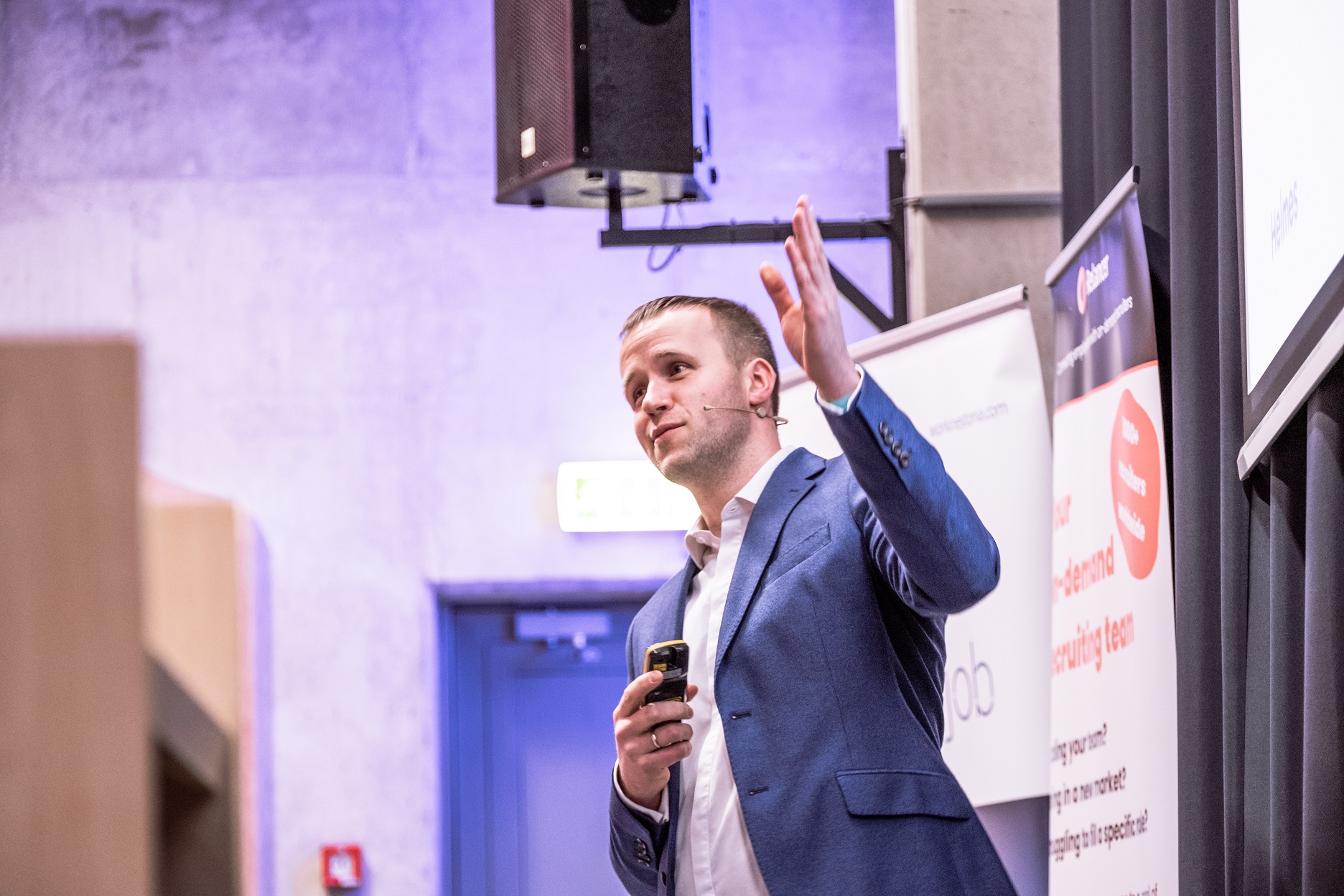In this post, Heiki Naagel, a team lead at Helmes, shares practical takeaways for teams working in a hybrid format based on the results of a 6-month scientific experiment conducted in Helmes in 2020 and the two-and-half years of progress after that.
I joined Helmes, a digital innovation company, in February 2020 to lead a team of eight software development professionals. At the time, we had two ongoing large projects, both highly business-critical for the customers.
Just as I had learned the names and faces of my new colleagues, the Covid shutdown happened. My team was suddenly in a forced remote work mode with a new team lead. It was a real shock – I still get goosebumps thinking back to those early days. Three weeks into my new job, I deeply cared about my people and customers and wanted to deliver results. Yet there was no science, training, or even a YouTube video about how to navigate our new situation.
So when Helmes offered my team and me a chance to be part of a scientific experiment on hybrid work focusing on team well-being and effectiveness, I was all in from the first moment.
The challenges of hybrid work
The six-month experiment, later chosen among the Top 10 people management case studies by the European Parliament, involved 100 people from eight teams in Helmes and was conducted with our research partner, Miltton New Nordics. The experiment took place in two-week learning and feedback cycles. Every two weeks, we had a short survey, plus check-ins and interviews, and based on the feedback, we adjusted our way of working to improve things.
If I think back to the initial six months and the 2 1/2 years that followed, the hardest part has been understanding how people are really doing. Simply asking people rarely suffices, as most of us would respond politely, “Thanks, I’m fine,” even if we actually have a sick kid at home or a pile of unanswered emails in our inbox. As a leader, you must open their protective shield to understand how your team is really doing because only then can you help and support them.
The second challenge in a hybrid work setting has been balancing focus time and communication time. Initially, we may have felt that working from home gives us all the focus time in the world. Yet, it soon became evident that the flashing Teams and Slack notifications, constant emails, and meetings killed our focus time. In our team, after some adjusting, we agreed on when to turn off the notifications and how to reach people in an emergency. Moreover, we also involved our customers in this discussion and agreement.
Thirdly, there is the issue of overwork and underwork. While I’ve dealt with underperforming in my team once, I much more often have to watch out for signs of overwork. Because working from home, you can start early, check emails over the morning coffee, and finish late. But this is the wrong way to go about it – your team needs to be rested and have plenty of time for their hobbies, families, and themselves.
Our team three years later
So where are we now after six months of scientific experiment and the two-and-a-half years of learning and adjustments that followed?
My team is quite happy, as shown by the internal testing indexes of well-being (93 percent) and engagement (85 percent). A happy team also allows our customers to be happy with our provided service, as indicated by our Net Promoter Score of 76.
Our team has a one-week working cycle. Our team day is Tuesday when we meet to reflect on the last week and plan for the next week. We give feedback, discuss ideas, have lunch together, and try to have fun. It’s the time for communication and the office buzz, which people really enjoy.
On Thursday morning, we have a 15-minute stand-up, typically in the format of a video call, where team members can share their progress and any issues. A two-hour time block for ad-hoc meetings and discussions follows the stand-up. We try not to book customer meetings or anything else for this two-hour slot; it’s time for us.
This results in what I sometimes feel is a unique factor: we have three-and-a-half days of potential focus time in the week. How many of us can truly say we have that?
Thanks to high psychological security and openness, we share a lot within the team. We don’t necessarily think the same way and have heated discussions. Sometimes a whole meeting goes to discuss something, but we keep respect for each other. My role as a leader is to ensure everybody can voice their opinion at the meeting or afterward.
Practical takeaways for happy teams
So how to create a successful team? Here are a few takeaways rooted in my experience:
- Define your values. In my opinion, you should first agree on common values as it gives people an understanding of what is and is not acceptable in the team and creates security.
- Measure your success. How do we know if we are successful or not? In our team, we have set some simple KPIs. These include our team’s well-being and climate (in other words, how happy we are with our way of working), customer NPS (how satisfied the customers are with our service), and our financial results – nothing more and nothing less, as everything else rests on these three things.
- Timeboxing change. To facilitate learning and adapting, we use timeboxing. It means that when proposing a change, we agree to try the new approach for a fixed period, for instance, a month. After that, we will discuss what worked and what didn’t and decide whether to continue or drop the idea. This way, people are happy to test new ideas even if they’re not certain of success.
- Understand the priorities. In one-on-one communication with your team members, you must understand that work is not the most important part of people’s lives – at least, it shouldn’t be. What matters to your team members is their family, their friends, and their hobbies.
- Keep your cup full. As a team lead, make sure you have time for your family, hobbies, and the things you enjoy. If you deeply care about your team, you may be tempted to solve every one of their problems, including personal ones, but you shouldn’t do that. Understand the limit yourself and communicate it to the team.
- Show your emotions. Here you have to walk the talk. For instance, I often start one-on-one conversations by genuinely sharing my emotions at that moment. When feeling drained on a particular day, I have suggested postponing interpersonal meetings by honestly sharing the reason. I feel that people appreciate honesty, and it feeds the psychological security of the team.
- Share with peers. I share and discuss what is working and what isn’t with other team leads in Helmes as well as people outside.
Final thoughts
We must accept that there are no ready-made solutions, and we have to work out our truth ourselves. If someone suggests they have a perfect solution for our team, they’re probably not telling the truth, as each team and each customer the team is working with is unique.
Sadly, many life lessons can only be learned first-hand – not by watching a YouTube video, listening to a conference presentation, or reading an article (even this one). You must act and feel one with your team; only then will you truly understand what you need to do and have the courage to do it.
There is no finish line, so don’t aim for the perfect situation. Instead, aim for the perfect learning and adapting process because the world changes, and then you can change with it. Happy experimenting!
Photo by Pilleriin Kivisikk
Get in touch




